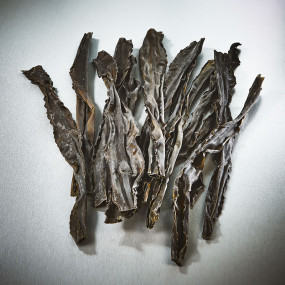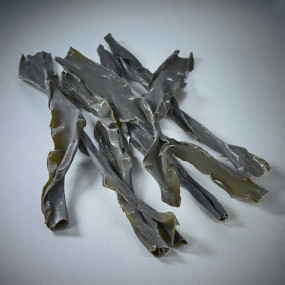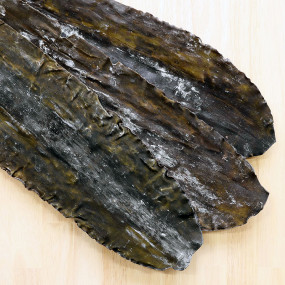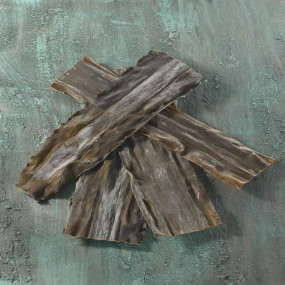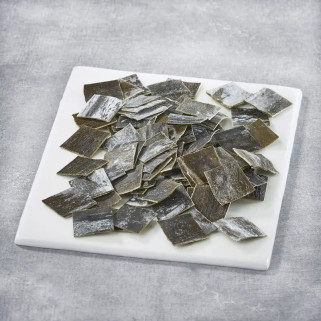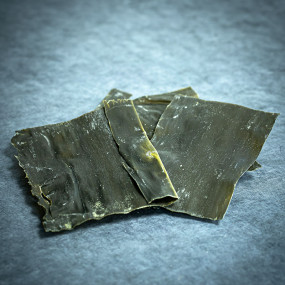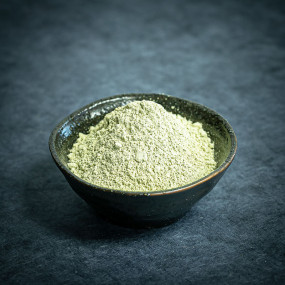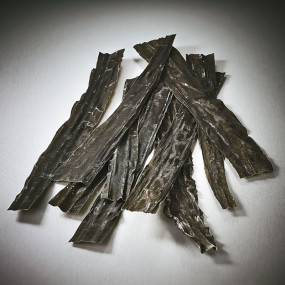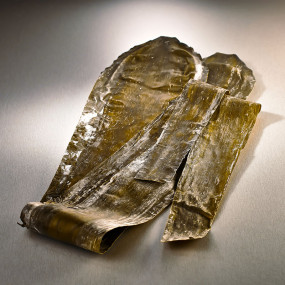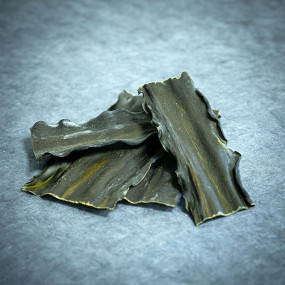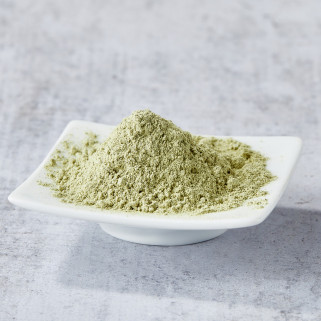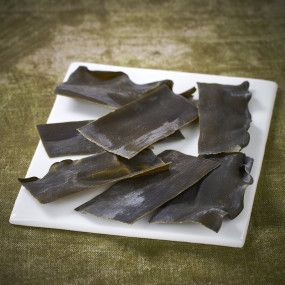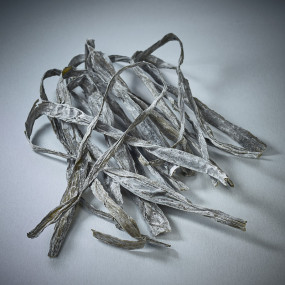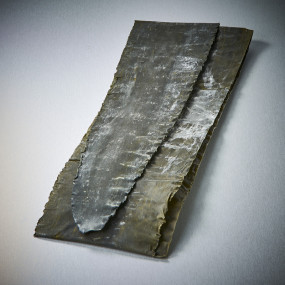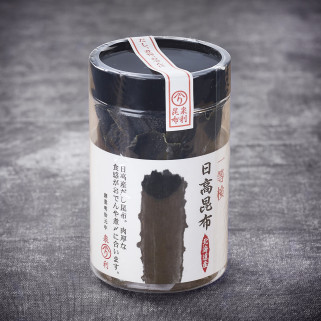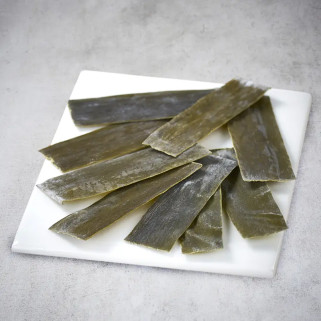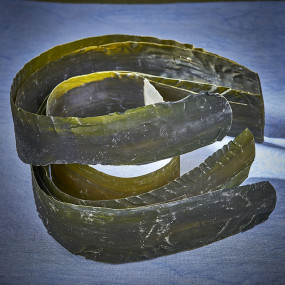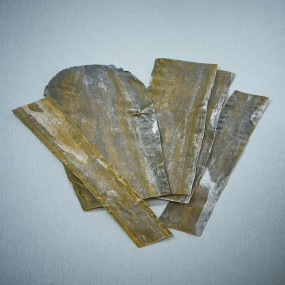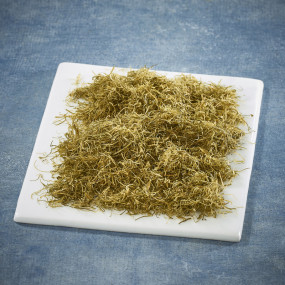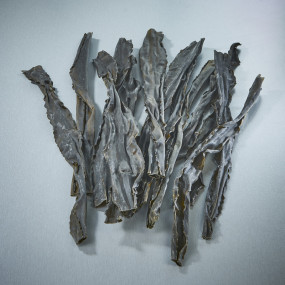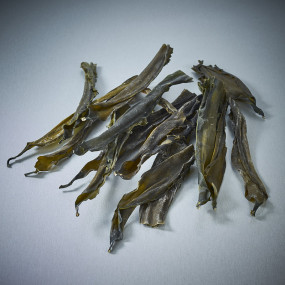What is kombu?
Kombu is a seaweed harvested in the cold waters of Japan, particularly in the Rishiri, Hidaka and Hokkaido regions. This brown seaweed is highly prized in Japanese cuisine, where it is a key ingredient in the preparation of dashi. Kombu is rich in umami and iodine, making it essential for adding natural flavour to soups, sauces and stews.
At Nishikidôri, the list of products available includes various forms of kombu:
- wild kombu
- dried kombu
- kombu powder,
- crystals (flakes).
Each one adds a new touch to your cooking. Our seaweed is rich in nutrients and minerals such as calcium, magnesium and vitamins A and C. Kombu powder, in particular, is a big hit with cooks who use it to make tasty broths.
Whether in powder form, dried leaves or as an infusion, the kombu sold at Nishikidôri can be used to intensify the flavour of a variety of preparations. Our customers' opinions confirm the excellence of these products, available directly from our online grocery shop.
The different Kombu seaweeds at Nishikidori
At Nishikidori, our varied selection of kombu products meets the needs of chefs and cooking enthusiasts. Kombu powder, wild kombu or dried kombu seaweed, each variety lends itself to specific uses to enrich dishes with authentic flavours. Here are some of the options available in our catalogue.
Wild kombu
Wild kombu is distinguished by its superior quality (thicker and tastier) compared to cultivated seaweed. It retains all its flavour and nutrients. This product is well up the list of must-haves for lovers of authentic Japanese cuisine.
Wild Hidaka Kombu seaweed, EXTRA quality
This product is one of the must-haves on the list of dried and undried wild seaweed. It is ideal for use in a variety of culinary preparations. Hidaka Kombu seaweed, native to Hokkaido, is appreciated for its soft dietary fibre and its ability to enrich simmered dishes. It can be used to prepare dashi with a rich umami flavour and a darker colour than traditional kombu. The products available, like this wild kombu, are very popular and can be ordered directly from our online grocery shop.
Kura-gakoi cellar-aged wild kombu seaweed
Sourced from the islands of Rebun and Rishiri, in the north of Hokkaido, this new range of products is particularly popular for varying food styles. Wild kombu from these regions is aged for 5 years in controlled cellars, using the Kura-gakoi method. This process reduces the pronounced marine flavours and brings out the pure essence of umami. This 5-year-old organic product is rich in iodine.
It's perfect for those looking for a seaweed with exceptional flavour. At Nishikidori, wild kombu is available in various forms, including powder, ideal for enriching dishes. This new culinary trend is becoming increasingly popular with connoisseurs, who appreciate its naturalness and versatility. Many reviews confirm the high quality of these products from Hokkaido.
Wild Rishiri kombu seaweed
This variety of seaweed (sometimes dried) is most commonly found along the shores of Rishiri Island in Hokkaido. Rishiri seaweed is renowned for its high quality, both in Japan and beyond. To obtain it, the product is first dried naturally and then matured for two long years. This seaweed can be used to cook vegetables, ramen or fish dishes.
Kombu powder
Kombu powder is a perfect product for enhancing dishes, thanks to its rich umami content. Made from dried kombu seaweed, it comes from wild varieties such as Rishiri or Hidaka kombu, both harvested in the pristine waters of Hokkaido. This product has an intense iodine flavour that enriches broths, dashi and other culinary preparations. The list of uses is long, and its popularity is growing among fans of Japanese cuisine.
Ideal for those looking for a new taste experience, kombu powder has received rave reviews. At Nishikidori, Rausu Kombu powder is one of the most popular products among connoisseurs. The seaweed is known for its broad, fine shape and very supple fibre. It gives a slimy, gooey texture when soaked in water. It is very rich in umami flavour.
The powder, which comes from dried seaweed, creates a tasty dashi, with a darker brown colour than Makombu or Rishiri dashi. This organic product from Nishikidori can be used for Kobumaki (Kombu rolls filled with cooked fish) or Kobujime (matured raw fish). Kombu powder is a key ingredient for enhancing the flavours of many dishes (minced meat, mashed potatoes, butter, clear broths, ravioli dough, etc.).
For those looking for extra finesse, we offer ultra-fine Hokkaido Kombu powder. Made from different varieties of high quality Kombu, all from Hokkaido, it's one of the most reliable organic products for enhancing your cooking. Orders can be placed directly online on our website. Delivery is made to the address indicated.
Naturally dried kombu
Naturally dried kombu is an exceptional product for top chefs and fans of Japanese cuisine. Here, the seaweed harvested from the waters of Rishiri or Hokkaido undergoes a natural drying process that preserves all its properties. This process intensifies the concentration of umami for a unique flavour that enhances dishes. This kombu is mainly used to prepare dashi, but it can also be rehydrated to enhance soups, stews or salads.
Ma Kombu dried kombu for dashi
Dried kombu comes in different forms: leaves, powder or sticks, making it a practical product for a multitude of recipes. Thanks to this drying process, it retains its nutritional qualities, particularly its high iodine content, while also having a long shelf life. Nishikidori's dried Ma Kombu is one of the most popular varieties for preparing light dashi in Japan.
Milder than Rishiri Kombu, it adds a subtle umami flavour to broths without weighing them down. This very practical product is used by chefs to marinate foie gras with miso, fresh fish fillets and vegetables. Large and thick, dark brown in colour, it can also be used to make tsukudani. It's ideal for those looking for a delicate yet richly flavoured kombu. Opinions are unanimous: dried kombu is a must for anyone looking for a powerful, rich umami. Nishikidori's naturally dried kombu is distinguished by its exceptional quality. It is carefully selected to satisfy chefs and lovers of Japanese cuisine.
Dried kombu seaweed, julienned
Produced by Nishikidori, this variety is made from Hombaohirama kombu, a large, long seaweed from the Hokkaido coast. This wild kombu, harvested after a minimum of two years' growth, is dried and then matured for 2 to 3 years. The result is an organic product rich in umami and iodine flavours. Once rehydrated, the seaweed takes on a tender texture and refined flavour. Kombu is highly versatile in the kitchen, and can be eaten hot or cold, as an accompaniment to simmered dishes or in salads.
It's easy to prepare. It infuses quickly and retains its greenish colour. This organic product is ideal for enriching dashi broths or even for frying into crunchy snacks. With its fine filaments, it also goes wonderfully well with dishes such as vegetables or fish.
What are the benefits of Kombu?
This seaweed is so popular with consumers for more than just its taste. Kombu is acclaimed for a number of benefits for the human body.
Support for thyroid function
One of the best-known benefits of this seaweed is its high iodine content. This mineral is important for the proper functioning of the thyroid. The thyroid plays a key role in regulating metabolism, producing energy and maintaining hormonal balance. Iodine deficiency can lead to disorders such as hypothyroidism. Wild kombu, particularly that harvested in Hokkaido, is particularly rich in iodine. It offers a natural solution for supplementing daily requirements of this nutrient.
Aids digestion
Kombu contains soluble dietary fibre, which helps to improve digestion. When rehydrated, these fibres form a gelatinous substance that facilitates intestinal transit. The seaweed also contains enzymes that help break down foods that are difficult to digest, such as legumes. Adding dried kombu when cooking beans reduces bloating and improves digestibility. This process is commonly used in the preparation of simmered dishes in Japan.
A detoxifying effect
Acting as a natural detoxifying agent, kombu contains compounds such as alginic acid, which binds to toxins in the body and helps eliminate them. As well as purifying the system, kombu encourages the elimination of waste accumulated in the intestines. The kombu-based products marketed by Nishikidori allow you to take advantage of these properties while adding a new touch to your daily meals.
Boosts the immune system
Kombu is also an excellent source of minerals and vitamins. These nutrients stimulate the production of white blood cells to help the body defend itself against infection. The antioxidants in kombu protect cells from damage caused by free radicals. By regularly eating kombu-based dishes, you can improve your immunity naturally, while adding an incomparable umami flavour to your meals at the same time.
Contributes to cardiovascular health
Kombu is ideal for reducing cholesterol and protecting the heart. This mineral-rich seaweed helps regulate blood pressure and prevent cardiovascular disease. By adding kombu to your diet, particularly in the form of powder or dried kombu, you can boost your heart health while enjoying the tasty, nutritious benefits of this ingredient.
Helps control weight
With a very low calorie intake, kombu is an excellent ally for those looking to lose weight or maintain a stable weight. The dietary fibre in this organic product provides a lasting feeling of satiety. This reduces appetite and snacking cravings. What's more, kombu is a highly nutritious seaweed that provides essential minerals without adding unnecessary calories. Adding our dried or powdered kombu to your diet helps to regulate weight gain. Nishikidori guarantees a quality product ready to enhance any recipe.
Strengthens bones
Kombu is an excellent source of calcium, an essential mineral for healthy bones and teeth. The magnesium present in the seaweed also helps with calcium absorption, making it a complete food for maintaining strong bones. Regular consumption of these plants in various forms (dried or powdered) can help prevent bone demineralisation and strengthen bone density.
Stabilises blood sugar levels
Kombu can also help regulate blood sugar levels thanks to its soluble fibre content, which slows the absorption of sugars into the bloodstream. This helps prevent blood sugar spikes. Dried kombu and its different variants, such as Rishiri kombu, are the products of choice for those who want to include healthy ingredients in their diet.
At Nishikidori, we offer a range of high-quality products, from wild kombu from Hokkaido to variants such as Hidaka or Rishiri kombu. Each of these plants offers unique flavours and exceptional nutritional value. You can order directly from our website and have your order delivered to the address you specify.


